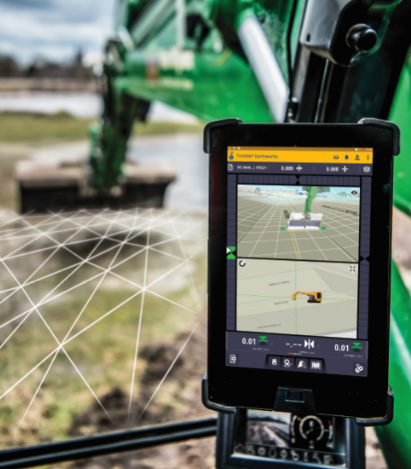Construction Business News ME caught up with Trimble’s Scott Crozier, General Manager of the Civil Construction Field Systems Division, on how automation, technology, and software solutions are changing how construction sites operate in the aftermath of COVID-19
Automation reshaping the construction industry
“Automation is reshaping the construction industry in many ways, including through improved safety, increased efficiency, and easing the challenges caused by a global workforce shortage.
Grade control solutions have reduced or eliminated the need for a survey crew to work alongside machinery to verify progress, which is one sure way to improve jobsite safety. Equipment collision avoidance technology is another step along the autonomous road that will become standard on machines, much like backup cameras on passenger cars. With radar and cameras, heavy equipment will be fitted with technology that can stop a machine before it hits powerlines or runs into something out of the ordinary on the jobsite.
Further, automation capabilities in the construction space have largely focused on blade and steering control, which incorporate sense-and-avoid detection sensors, as well as geofencing capabilities to confine movement to a defined area, along with other safety features and tele-operated observer controls.

Semi-automatic excavators have been out for some time, as have dozers, motor graders and paving machines, all of which are already helping to vastly improve jobsite productivity. In today’s market, a contractor of any size can gain almost immediate value in productivity with machine control technology, while setting themselves up to take advantage of future autonomous capabilities. Some contractors are already realizing double digit improvements in productivity after implementing machine control technology.
All of this helps ease the challenges of the workforce shortage by making construction jobs more appealing to a broader and younger audience, and by enabling current machine operators – both new and experienced – to work more efficiently and with greater precision. Machine control systems like Trimble Earthworks quickly help make inexperienced drivers good and experienced drivers great.
The use of automated equipment and robots can also help alleviate concerns around the spread of germs by helping reduce the number of people required on a jobsite.”
Technology assistance in combatting issues related to COVID-19
“Technology can help contractors remain resilient and ensure business continuity through Covid-19 – and through any unexpected disruptions to business. New hardware and software solutions like Trimble WorksManager are making it easier to enable connected workflows and manage projects remotely, with capabilities that include the wireless transfer of 3D designs and dashboards that show real-time job progress.
Technology advances such as virtual reality (VR), augmented reality (AR) and mixed reality are helping drive efficiencies through remote training, collaboration, jobsite management, and quality control and assurance, which are all valuable when it’s important to keep the number of people on a jobsite to a minimum.
Augmented and mixed reality technologies can help workers visualize a job site remotely and collaborate between the office and the field, improve issue resolution and drive productivity. With this year’s release of Trimble Earthworks 2.0, AR is available in the cab of the excavator, which helps operators more easily understand 3D models, cut/fill information, slope data and other bench points and reference points.
A vast array of technology solutions – from cloud-based collaboration tools to machine control to drone technology – are helping teams work together while reducing the number of people who need to be on the jobsite, which helps combat safety issues with having too many people working in close proximity.”
Increasing Health and Safety on site
“Automating construction equipment and increasing the use of robots on job sites helps improve the health and safety of workers by literally keeping them out of harm’s way. Machine control technology reduces the need for people working on the ground near heavy equipment, and robots and drones can both gather information from tight and perilous spots that would be risky or hard to reach by workers.
The use of automated equipment and robots can also help alleviate concerns around the spread of germs by helping reduce the number of people required on a jobsite.”
Embracing Disruption
“Often, forced disruptions open the door to new opportunities, and we believe this will be the case with the construction industry. We are seeing customers, dealers, partners, our own product development teams and the entire industry find innovative solutions to what are all of the sudden everyday problems as the result of COVID-19. The pandemic environment has also helped increase the adoption of digital processes in the construction workflow.
Even when the day-to-day impacts of the pandemic are behind us, the solutions that have helped people work more efficiently even while they are physically apart from each other will help drive increased productivity and profitability for contractors.”
The “Digital Initiative”
“The “digital native” generation needs very little training or convincing in order to readily use technology on the jobsite.
At Trimble, we are very intentional about designing products that are intuitive and easy to learn and use, regardless of an operator’s previous experience with technology. We have simulators and remote assistant training for anyone who may want a little extra practice, and our SITECH dealers are always nearby to help with training, support or whatever assistance is needed. These days, companies really shouldn’t have to redevelop their workforce to be more tech focused, the technology should be designed to be easy to adopt and use.”




